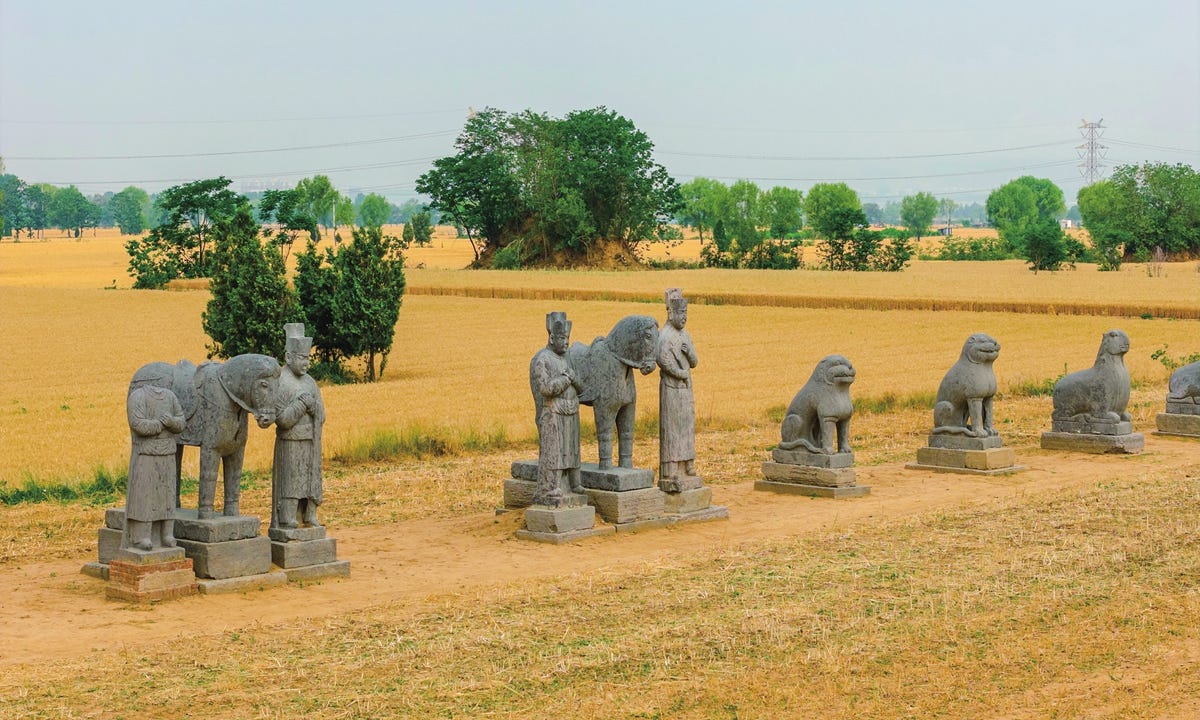I read an interesting story about some ancient carvings found in China - ‘Evidence of the location of the ancient Kunlun’, where archaeologists discovered ‘a 37-character Qin Dynasty cliff inscription’ that is ‘in typical Qin Xiaozhuan script’, and the content is roughly as follows:
“In the 26th year of Emperor Qin Shihuang, the emperor sent Wu Dafu Yi to lead some alchemists to Kunlun Mountain to pick the elixir of immortality. They arrived here (the shore of Zhaling Lake at the source of the Yellow River) on the jimao day of March of that year, and then went on for about 150 li (reaching the end of the journey).”
Emperor Qin was the first emperor of China in 221BC, and this carving is the only one from that period, and because it is intact and in its original location, makes its discovery of great importance. It also shows the location of Kunlun mountain, that is seen in many Chinese myths and legends and poems, and also in the ancient pre-Qin ‘Classic of Mountain and Seas’.
Then I read an interesting story about some ancient carvings found in Canada!!! - ‘Wawa Runestone’, a petroglyph (rock carving) that appeared to be in a runic script from northern Europe.
Oh No, was this to be the definitive evidence to prove the ‘unproven’ theory of Vikings visiting Canada!!! But alas, it turns out that the runic script was a Swedish-language version of the Lord’s Prayer!
And then I read another story - ‘MYSTERY OF STRANGE CANADIAN ROCK CARVINGS SOLVED’, that tells us that indeed, the runes are of a 1611 version of the Lord’s Prayer in Swedish. But how did they get there? well …
“…during the nineteenth century, Canada’s Hudson Bay Company sometimes hired Swedish workers to man wilderness trading posts, including the Michipicoten post, which was not too far from where the carvings were discovered. It is likely that the site was used for Swedish religious gatherings…”
So, it’s not those elusive Vikings, but it is around 200 years ago, and it should be preserved, with the hope of someday finding the name of that Swedish fur-trader who put in all that labour and time to carve this rock.
Then I read another story about China - ‘How thousand-year-old statues and wheat fields thrive side by side’, where stone sculptures guard the tombs of the Song Emperors, and how the statues came to be standing alongside the wheat fields!
“thousand-year-old stone sculptures from the Northern Song Dynasty (960-1127) stand quietly amid the vast fields like timeless guardians.”
"The unique landscape where Northern Song Dynasty stone sculptures coexist with wheat fields is one of the most vivid ways history speaks to the present,"
So then, I watched a video about Xiao Shu (Lesser heat), the 11th term in the Chinese solar astronomical calendar, that starts today, and Dominic takes us to Hangzhou, and it’s about getting immersed in the beauty and the study of the lotus flowers, and peeling the lotus plumule to make tea, and drinking the hot tea to keep cool, and making lotus flower arrangements and paintings that can keep us calm, and cool too.
Rock carvings and summer lotus - “keeping time, time, time, in a sort of Runic rhyme” - [from Edgar Allan Poe’s ‘The Bells'.]
Have fun, and happy Xiaoshu!






Beautiful scenery! Invokes peacefulness and harmony...